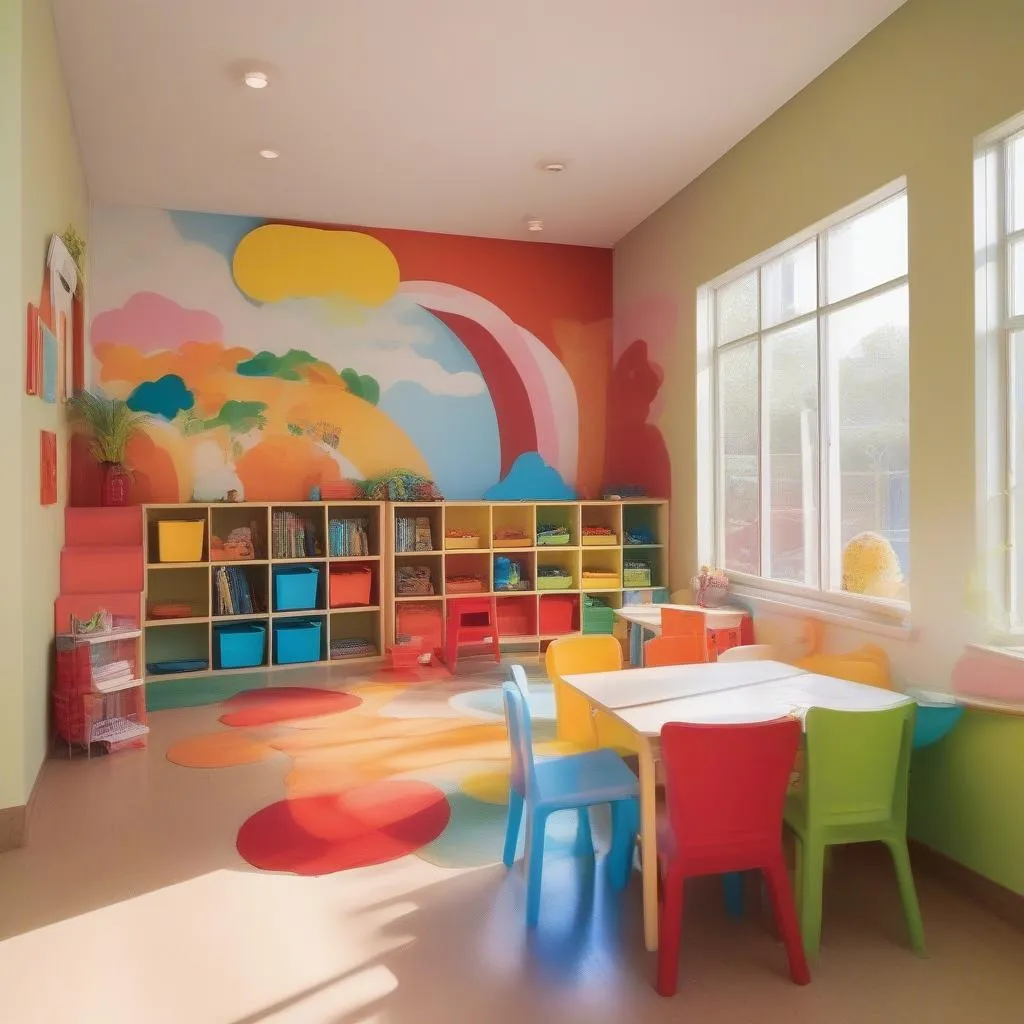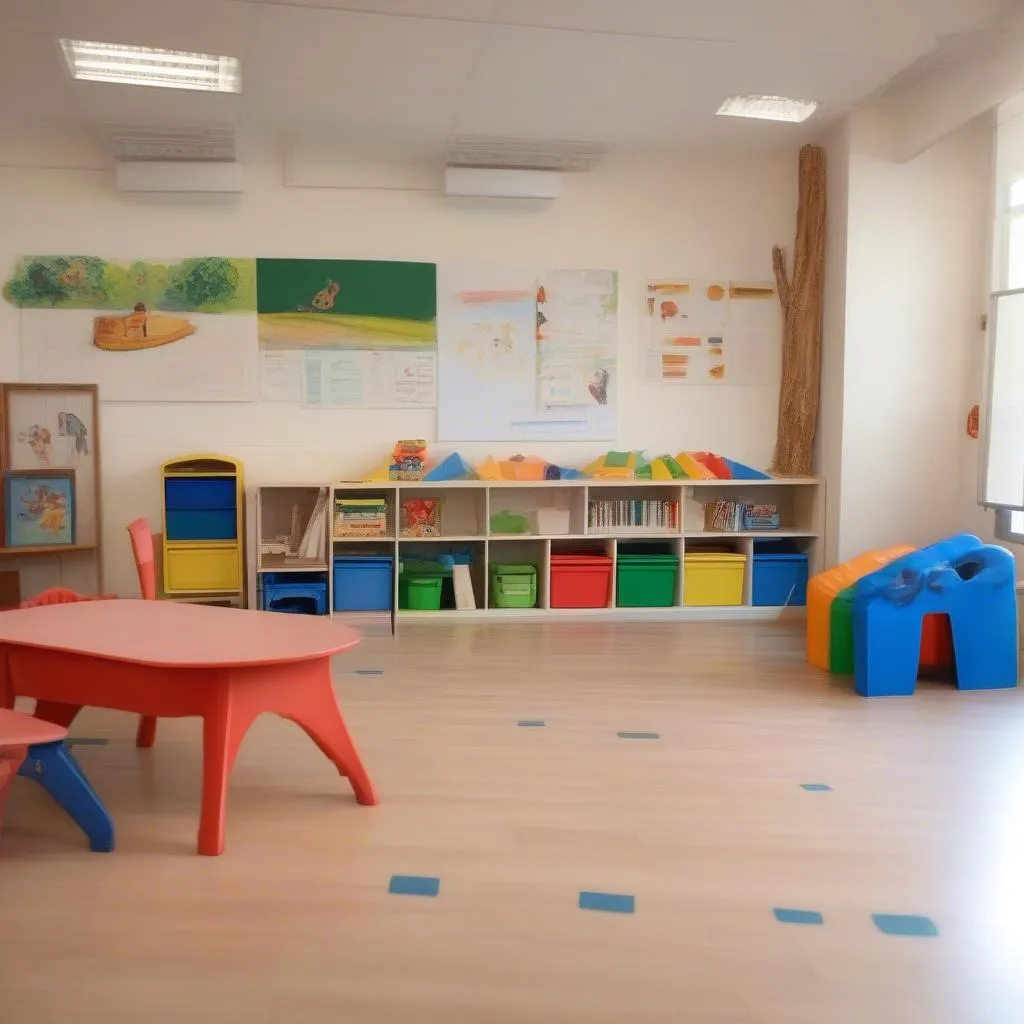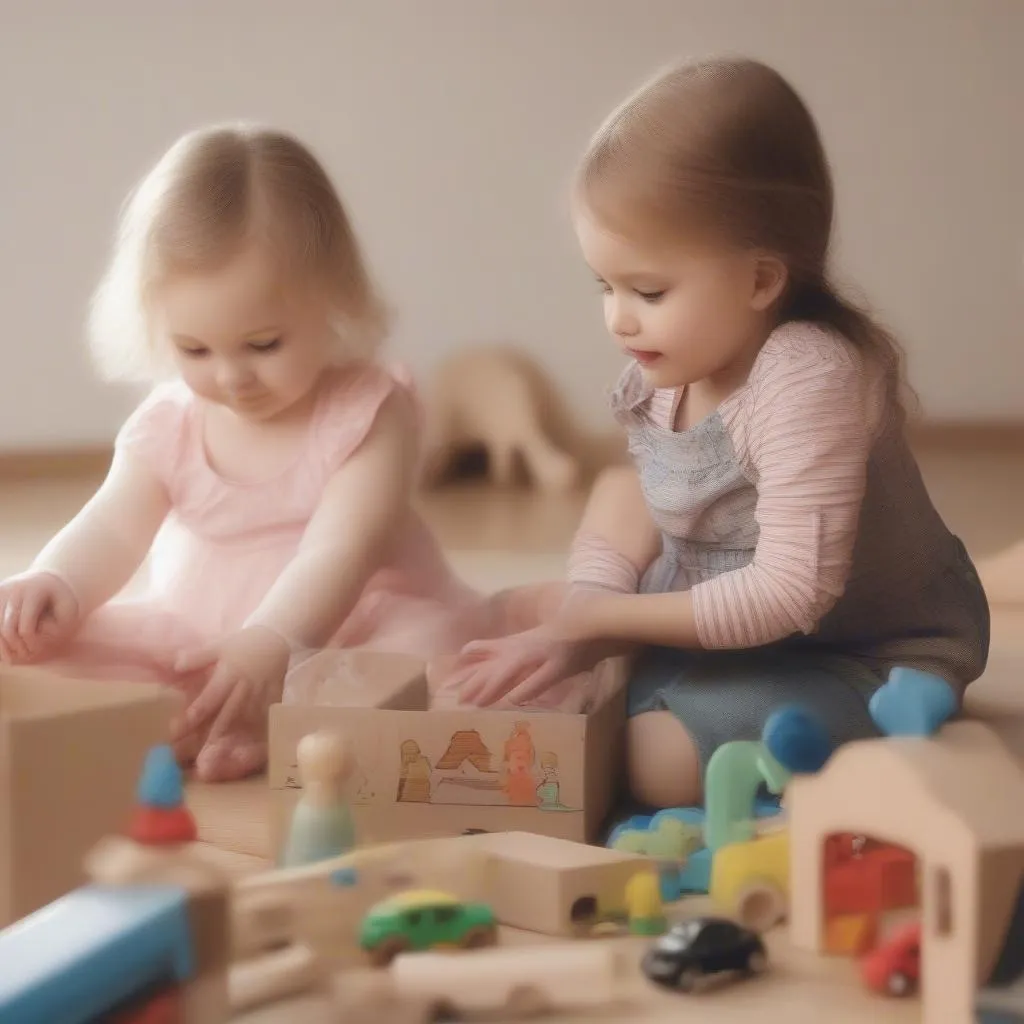“Sow seeds of kindness, reap happiness,” this proverb truly affirms the importance of early childhood education. This stage is the foundation for a child’s holistic development, from their soul and intellect to their physical being. And one of the crucial factors in creating an ideal learning environment for preschoolers is educational environment design.
The Importance of Educational Environment Design in Kindergarten
Laying the Foundation for Holistic Child Development
Educational environment design is a broad concept encompassing architecture, interior design, colors, lighting, sound, toys, learning tools, and educational activities. A well-designed educational environment creates favorable conditions for children to develop comprehensively in terms of physical, mental, intellectual, social, and aesthetic aspects.
- Physical Development: A spacious and airy educational environment with ample space for activities helps children develop physically through movement games and outdoor activities.
- Intellectual Development: An educational environment equipped with toys, learning tools, and books helps children learn, explore, and develop their intellect and creative thinking skills.
- Emotional Development: A friendly, safe, and warm educational environment helps children feel comfortable, secure, and fosters love for school, class, teachers, and friends.
- Social Development: An educational environment that encourages interaction and cooperation helps children develop communication, teamwork, and independence skills.
- Aesthetic Development: A beautiful and harmonious educational environment that aligns with the psychology of this age group helps children develop aesthetic perception and artistic creativity.
Creating Learning Motivation and Curiosity
“Learning by doing,” a suitably designed kindergarten educational environment creates motivation and learning interest for children. Instead of traditional learning methods, children will experience, explore, play, and learn through practical activities and educational games. For example, instead of learning the alphabet by reading and writing, children will learn through shape-sorting games, coloring, letter puzzles, creating excitement and longer retention.
Promoting Independence and Autonomy in Children
An educational environment designed to promote independence and autonomy helps children develop self-service skills, self-directed learning, and self-management, preparing them with a solid foundation for entering first grade.
Key Factors to Consider in Kindergarten Educational Environment Design
Safety and Health
- Safety: Safety is the top priority in designing a kindergarten educational environment. Use safe materials, free of harmful chemicals, rounded corners, handrails on stairs, non-slip floors, window screens, and complete fire safety systems.
- Health: The educational environment needs to ensure adequate lighting, ventilation, appropriate temperature, clean water systems, and clean, airy restrooms.
Friendliness and Stimulation of Creativity
- Friendliness: A friendly and warm educational environment creates a comfortable and joyful feeling for children, helping them love school, class, teachers, and friends. Use bright colors, playful patterns, cute images, and attractive toys and learning tools.
- Stimulating Creativity: The educational environment needs to be diverse and flexible, helping children explore and create. Provide diverse toys and learning tools, multi-functional activity areas, and spacious outdoor play areas equipped with facilities for children’s learning, play, and entertainment activities.
Age-Appropriateness
- Age Group: Educational environment design needs to be appropriate for the age of the children, with spaces, toys, learning tools, and activities suitable for their learning abilities. For example, for younger children, the space should be simple, toys should be safe, and activities should be gentle; for older children, the space can be more diverse, toys more complex, and activities more challenging.
- Attention and Care: Regularly monitor and observe to understand children’s psychology and adjust the educational environment accordingly.
Frequently Asked Questions about Kindergarten Educational Environment Design
How to design a kindergarten educational environment that is suitable for children?
To design a kindergarten educational environment suitable for children, consider the following criteria:
- Age Group: The design must be appropriate for the age of the children.
- Psychology: The design must be appropriate for children’s psychology, creating a sense of safety, joy, and comfort.
- Attention and Care: Regularly monitor, observe, and understand children’s psychology, adjusting the educational environment accordingly.
What colors should be used for a kindergarten educational environment?
Use bright, vibrant colors such as green, blue, yellow, red, orange, purple, etc., but avoid using too many colors that can be overwhelming for children. Use colors thematically to create color and image coherence.
How should functional areas be arranged?
Arrange functional areas logically, creating connections between areas, convenient for movement, for example, learning area, play area, dining area, nap area, restroom area, etc.
What types of toys should be chosen?
Choose toys that are safe, age-appropriate, diverse in type, attractive to children, and help children develop intelligence, creativity, motor skills, and social skills.
What materials should be used?
Use materials that are safe, durable, non-toxic, easy to clean, and environmentally friendly.
What equipment should be used?
Use equipment that supports children’s learning, play, and entertainment, such as projectors, TVs, computers, sound systems, DVD players, etc. Equipment needs to be carefully selected, age-appropriate, safe, and easy to use.
Conclusion
Designing an educational environment in kindergarten is a task that requires investment and dedication from educators, architects, and designers. Let’s join hands to create safe, friendly, and creativity-stimulating educational environments, contributing to nurturing “Vietnam’s young sprouts” into talented, ethical individuals who are beneficial to society.
 Bright colors for kindergarten
Bright colors for kindergarten
 Learning area in kindergarten
Learning area in kindergarten
 Safe toys for preschoolers
Safe toys for preschoolers
Do you have any questions about designing educational environments in kindergarten? Leave a comment below!
Share this article with friends who are interested in early childhood education!
Visit the “TUỔI THƠ” website to discover more helpful articles about early childhood education!